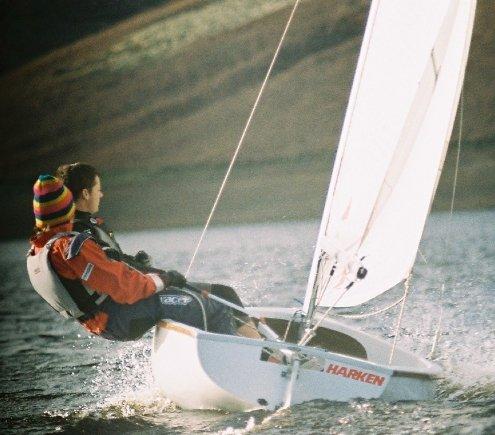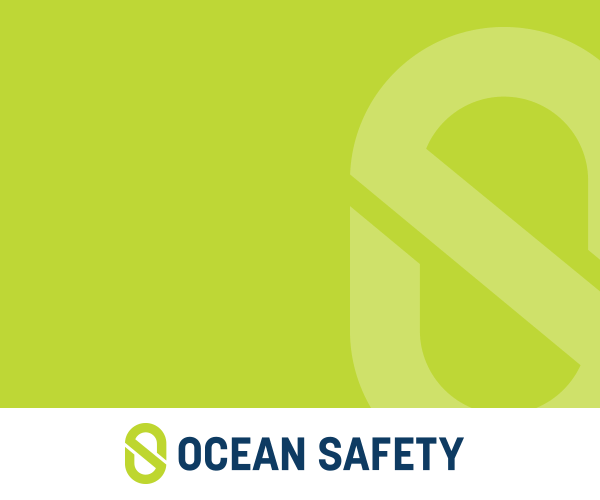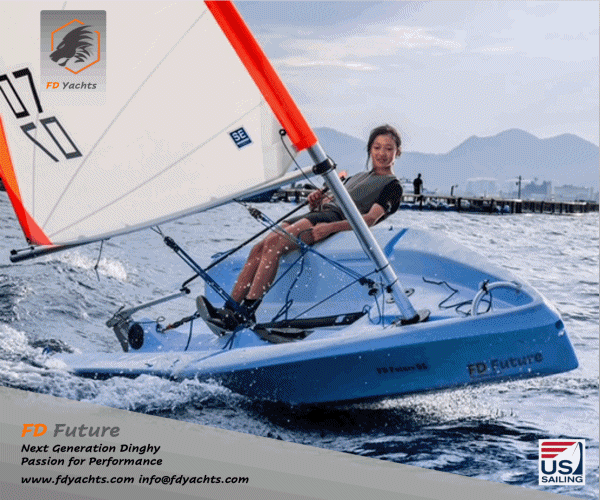Proper Course |
Post Reply 
|
Page 12> |
| Author | ||
jeffers 
Really should get out more 

Joined: 29 Mar 04 Location: United Kingdom Online Status: Offline Posts: 3048 |
 Post Options Post Options
 Quote Quote  Reply Reply
 Topic: Proper Course Topic: Proper CoursePosted: 16 Nov 15 at 7:00am |
|
Definitely not true. I can assure that the boat that gets the gust first will usually get to the next mark first. this will involve changing course to meet it and then changing course once they are in it.
|
||
|
Paul
---------------------- D-Zero GBR 74 |
||
 |
||
NickM 
Far too distracted from work 
Joined: 27 May 09 Location: United Kingdom Online Status: Offline Posts: 328 |
 Post Options Post Options
 Quote Quote  Reply Reply
 Posted: 15 Nov 15 at 10:45pm Posted: 15 Nov 15 at 10:45pm |
|
|
DIV]
On a reach the proper course for almost all boats is a straight line to the next mark. [/QUOTE]
On windy reaches, even in a una rig single hander, you may have to head up in the lulls so as to be able to bear off to avoid being overpowered in the gusts. |
||
 |
||
Brass 
Really should get out more 
Joined: 24 Mar 08 Location: Australia Online Status: Offline Posts: 1151 |
 Post Options Post Options
 Quote Quote  Reply Reply
 Posted: 15 Nov 15 at 10:18pm Posted: 15 Nov 15 at 10:18pm |
|
Further, right of way rules operate independently of rule 17. As long as there was room for W to keep clear, whether or not L broke rule 17 does not affect whether W kept clear, and L, if she broke rule 17, cannot be said to have compelled W to break rule 11 as a consequence of L breaking rule 17, so W cannot be exonerated for breaking rule 11 under rule 64.1( a ). |
||
 |
||
Brass 
Really should get out more 
Joined: 24 Mar 08 Location: Australia Online Status: Offline Posts: 1151 |
 Post Options Post Options
 Quote Quote  Reply Reply
 Posted: 15 Nov 15 at 10:13pm Posted: 15 Nov 15 at 10:13pm |
|
What's wrong with it is that, in its 'nautical use' demonstrated by numerous posters in rules threads, the verb 'to luff' has a multiplicity of meanings with various qualifications, such as a change of course:
Notwithstanding your content analysis of various sources, I would point out that the racing rules applicable to fleet racing only use the word 'luff' as a noun meaning a part of a sail. I remain convinced that rules discussions would be better off without using the term.
|
||
 |
||
Presuming Ed 
Really should get out more 
Joined: 26 Feb 05 Location: United Kingdom Online Status: Offline Posts: 641 |
 Post Options Post Options
 Quote Quote  Reply Reply
 Posted: 15 Nov 15 at 11:59am Posted: 15 Nov 15 at 11:59am |
|
|
On a run Position 1. Blue is clear ahead, RoW. Yellow is clear astern. Yellow must keep clear (RRS 12). Blue must give yellow room to keep clear when she changes course (RRS 16.1). (*) (Both should avoid contact - RRS 14). Position 2. Blue is overlapped to windward of Yellow. Blue, as a windward boat, must keep clear of Yellow (RRS 11). Yellow has acquired RoW by becoming overlapped to leeward of blue. She must therefore initially give Blue room to keep clear. (RRS15) When yellow changes course, she must give blue room to keep clear (RRS16.1). (*) Yellow has become overlapped to leeward of blue within 2 of her hull lengths. She should therefore not sail above her proper course while they remain on the same tack and overlapped within that distance, unless in doing so she promptly sails astern of blue. (Both boats should avoid contact). Proper course is defined as "Proper Course A course a boat would sail to finish as soon as possible in the absence of the other boats referred to in the rule using the term. A boat has no proper course before her starting signal." *( No course changes in this scenario to bring 16.1 into action).  On a reach All the same points as above apply. So again, yellow should not sail higher than her proper course while she's overlapped with blue (unless she sails astern). Note, however, that Yellow's proper course in this scenario does not include luffing as a result of blue's wind shadow (the other boat referred to in the rule (17)).  Edited by Presuming Ed - 15 Nov 15 at 12:03pm |
||
 |
||
JimC 
Really should get out more 

Joined: 17 May 04 Location: United Kingdom Online Status: Offline Posts: 6662 |
 Post Options Post Options
 Quote Quote  Reply Reply
 Posted: 15 Nov 15 at 11:56am Posted: 15 Nov 15 at 11:56am |
|
Strongly disagree. In a high performance spinnaker boat there will be two optimum points of sailing, a max speed two sail reach speed and a max speed 3 sail reach speed. The difference between the optimum and other points of sailing is so great (at least in planing conditions) that you should always sail on them. So given a reach which is not at one of those angles the fastest and therefore a proper course is to sail part of it without the kite at optimum two sail speed, and part of it with the kite at optimum 3 sail speed. The only fly in the ointment is that handling the boat at optimum two sail speed may be rather difficult! The thing is that normally a boat doing this will not meet a boat sailing the rhumb line, since you will either want to postpone the hoist and go high, then chuck the kite up and go down, or else fly the kite and go low, then two sail up to the mark. Its only if something goes wrong, as per previous post, that the proper courses will intersect. Edited by JimC - 15 Nov 15 at 12:02pm |
||
 |
||
Quagers 
Far too distracted from work 

Joined: 24 Oct 06 Location: United Kingdom Online Status: Offline Posts: 279 |
 Post Options Post Options
 Quote Quote  Reply Reply
 Posted: 15 Nov 15 at 11:45am Posted: 15 Nov 15 at 11:45am |
|
|
They are allowed to sail their proper course, for many boats dead down wind that is not pointing straight at the mark.
On a reach the proper course for almost all boats is a straight line to the next mark.
|
||
 |
||
JimC 
Really should get out more 

Joined: 17 May 04 Location: United Kingdom Online Status: Offline Posts: 6662 |
 Post Options Post Options
 Quote Quote  Reply Reply
 Posted: 15 Nov 15 at 11:43am Posted: 15 Nov 15 at 11:43am |
|
Exactly so. There is no "overtaking boat" concept in the rules. A windward boat must nearly always let a leeward boat sail where it wants. The main limitation is that if the leeward boat comes from behind then she may not sail above a proper course. And exactly the same applies on a reach. If a kite boat goes round the mark, chucks the kite up and gets blown way down by a big gust it would be a perfectly reasonable proper course to drop the kite and two sail reach well above the direct line between the marks in order to hoist the kite again before the next mark. If whilst doing this her course intersects with a windward boat sailing a straight line then the boat sailing a straight line must keep clear. Edited by JimC - 15 Nov 15 at 11:44am |
||
 |
||
rich96 
Really should get out more 
Joined: 20 Jan 05 Online Status: Offline Posts: 596 |
 Post Options Post Options
 Quote Quote  Reply Reply
 Posted: 15 Nov 15 at 11:09am Posted: 15 Nov 15 at 11:09am |
|
|
So even though Boat B is coming from astern and sailing above the heading for the mark its Boat A's responsibility to keep clear ?
How does this vary from a reach if Boat B was coming from astern and to leeward - at what point can they start asking A to head |
||
 |
||
Presuming Ed 
Really should get out more 
Joined: 26 Feb 05 Location: United Kingdom Online Status: Offline Posts: 641 |
 Post Options Post Options
 Quote Quote  Reply Reply
 Posted: 15 Nov 15 at 10:26am Posted: 15 Nov 15 at 10:26am |
|
Luff? What's wrong with luff? It's a clearly defined verb (OED "Steer (a yacht) nearer the wind") that occurs 3 times in the RRS, 109 times in the case book, a further 9 times in the supplement to the cae book,11 times in the current Q&A booklet, 112 times in the TR call book, 6 more times in the current TR supplement, 5 times in current TR Q&As, 80 times in the MR call book, 9 times in the current MR supplement, once (in the title/abstract) of the only current MR Q&A, and three times in the blind match racing rules In what way is "changed course towards the wind" better than "luffed", a clearly understood, long standing piece of sailing terminology?
Edited by Presuming Ed - 15 Nov 15 at 10:49am |
||
 |
||
Post Reply 
|
Page 12> |
| Forum Jump | Forum Permissions  You cannot post new topics in this forum You cannot reply to topics in this forum You cannot delete your posts in this forum You cannot edit your posts in this forum You cannot create polls in this forum You cannot vote in polls in this forum |
Bulletin Board Software by Web Wiz Forums® version 9.665y
Copyright ©2001-2010 Web Wiz
Change your personal settings, or read our privacy policy
Copyright ©2001-2010 Web Wiz
Change your personal settings, or read our privacy policy













-(1)-202408140552.gif)












 Printable Version
Printable Version Delicious
Delicious Digg
Digg Facebook
Facebook Furl
Furl Google
Google MySpace
MySpace Newsvine
Newsvine reddit
reddit StumbleUpon
StumbleUpon Twitter
Twitter Windows Live
Windows Live Yahoo Bookmarks
Yahoo Bookmarks Topic Options
Topic Options